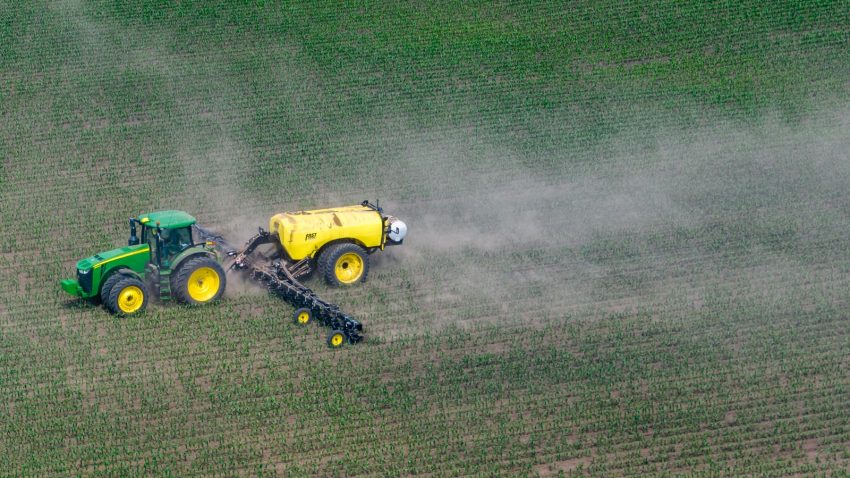Fertilizer: The Climate Problem You Didn’t Know Existed

Fertilizer use across the world has increased dramatically over the last few decades, and it’s not going to slow down anytime soon. But with fertilizers come another problem that many people don’t realize exists: nitrous oxide emissions from fertilizer use contribute to global warming just as much as carbon dioxide emissions do, and they can have even more severe effects on human health and the environment than carbon dioxide pollution can have in the long-term.
What is fertilizer?
Fertilizer is a mixture of agricultural chemicals that is used to provide nutrients to crops. It’s been used since the 19th century as a way to help grow more food, and it’s now seen as one of the most important tools in fighting hunger. Fertilsers are primarily made up of nitrogen, phosphorus, and potassium (NPK). Nitrogen helps plants use water and other nutrients more efficiently by creating proteins that break down into nitrates which are absorbed by the plant roots. Phosphorus helps in photosynthesis–the process where plants convert light into energy for growth. Potassium also plays an important role in photosynthesis as well as cell growth and division.
How much do we use?
The world uses about 270 million metric tons of fertilizer every year. China produces 40 million metric tons, making it the number one producer in the world. The US is a distant second with 20 million metric tons of fertilizer production per year. India comes in third with 10 million metric tons, followed by Russia and Brazil with 7.5 and 5.5 respectively. Fertilizer is used to produce nearly half the food we eat worldwide, so these numbers are staggering like the best payout online casino.
Who uses it most?
The largest use of fertilizer is in the production of meat. While the process itself doesn’t produce any greenhouse gases, the feed given to animals does. In order to grow enough crops to feed livestock, farmers often over-till their land and clear forested areas. This changes soil chemistry, leading to more nitrous oxide emissions from the soil. Nitrous oxide is a potent greenhouse gas with 298 times more warming potential than carbon dioxide according to Intergovernmental Panel on Climate Change (IPCC).
What are its effects on the world?
Agriculture is a major source of greenhouse gas emissions in the United States, accounting for nearly 15% of total carbon dioxide (CO2) emissions and over 25% of methane (CH4) emissions. One reason agriculture contributes so much to climate change is fertilizer use. Fertilizers are used to make plants grow bigger, faster and with more nutrients than would otherwise be possible without them. But when fertilizer breaks down in the soil or leaks into groundwater or surface water it releases nitrous oxide (N2O), which has 296 times the heat-trapping potential of CO2 over a 100-year period. And that’s not all. When fertilizer washes off farmland after heavy rains, it feeds algae blooms that can make water unsafe to drink and kill marine life.
Should we stop using it?
The answer is not as simple as it may seem. Fertilizers are needed to grow enough food to feed the world’s growing population, and they are necessary for food production in any climate.
Agriculture is a major source of greenhouse gas emissions, and more than three-quarters of those emissions come from fertilizers. Globally, fertilizers contribute about 12 percent of total anthropogenic GHG emissions annually, according to the International Fertilizer Association (IFA) and new online casinos.
If we don’t have fertilizer, then we won’t be able to produce enough food for our growing population or feed a hungry world.
Will this really make a difference?
Studies have shown that by 2050, the amount of nitrous oxide in the atmosphere will double, surpassing all other human-made greenhouse gases. Nitrous oxide is not only a major contributor to global warming, but it also leads to acid rain and harmful ozone smog. This problem stems from nitrogen-based fertilizer used on farmlands across the world. Fertilizers contain nitrates and ammonium which react with water and release nitrous oxide into the atmosphere.
It’s easy to see why this is such a big climate problem because this gas has 300 times more heat trapping power than carbon dioxide over a 100 year time frame. This means that if nitrous oxide continues to increase at its current pace, it could be potentially catastrophic for our planet.



Leave a Reply
You must be logged in to post a comment.